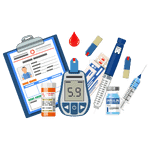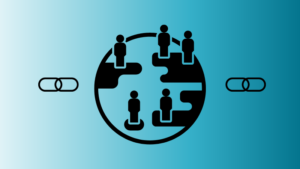Population health refers to the evaluation of health status and health outcomes within a group of people, rather than within a single individual.¹ Subsequently, using this method can highlight significant care gaps and pinpoint the need for targeted interventions that deliver the right care to the right groups of patients. Population health helps health systems reduce costs; improve health outcomes; create system efficiency and combat negative social determinants of health.
To improve population health, clinicians need to first be able to understand the population they’re working with and then tailor health interventions for specific groups. One way to accomplish this is through population segmentation. Population segmentation is the process of separating a population into distinct groups based on behavior, individual characteristics, or specific health needs.²
Use Cases for Population Segmentation²:
Population Health Management Strategy: Segmentation can help identify a population’s healthcare needs and corresponding resources. This approach allows health systems to assist each segment and create and track success metrics.
Intervention Targeting: Segmentation can help determine which groups would benefit from a specific intervention, based on enrollment criteria and the likelihood of success. This matches the right patient to the right program.
Tailoring Care Delivery: Segmentation can also highlight the clinical needs of each patient group and tailor care delivery based on other patient data. This segmentation-based approach to population health is often more useful to clinicians than single risk markers.
Breaking Down Population Segmentation
To identify your segmentation group, researchers at the Center for Medicare and Medicaid Services propose organizations use guidelines that are based on patients’ “health prospects and priorities.”³ The latter undoubtedly introduces an element of “patient-centeredness,” which is a goal service providers increasingly strive to meet. Clinicians should keep the following principles in mind to create an effective strategy:
-
The number of segments needs to be limited
-
The segments need to include everyone meeting the segmentation criteria
-
Segments need to be sufficiently discriminatory. The people in each segment should have similar healthcare needs, rhythms of need, and priorities.
There are multiple methods used to segment patient data, but the process is usually based on the following elements:
- Population or patient characteristics that are used to assess, define and operationalize healthcare needs.
- Desired Outcomes when addressing a population or patient needs
- Segmentation logic that determines how subpopulations or patient groups are formed.³ However, rather than segmenting your population based on a predicted risk score of specific health outcomes, consider grouping individuals in a population based on the type of care they need and how often they will need it. This will allow for clinical care delivery, population health interventions and policies to be tailored for each segment of the population based on their specific health drivers (behavioral, clinical, or demographic).
With the use of RPM and patient segmentation, you can ensure that patients with multiple needs receive coordinated services from all relevant providers in healthcare, and increasingly, social and community care as well. Care coordination is increasing in complexity and efforts to ensure that patients receive “seamless care” will benefit from the segmentation of patients into groups with well-predicted service needs.
To achieve seamless care coordination, research has found that patients can be split up into seven segments based on health status and the degree of patient self management.³ This segmentation is useful, especially for service providers wanting to ascertain who will benefit most from emerging technologies and effectively triage resources used in traditional support.
 Healthy persons:
Healthy persons:
This group of patients has a very high degree of patient self-management and can benefit from care plans enforcing personal well-being through e-health tools.
 Persons with incidental needs:
Persons with incidental needs:
These patients have a high degree of patient self-management and can benefit from e-health tools that provide easy, timely service, such as occasional e-visits.
 Persons with chronic conditions:
Persons with chronic conditions:
These patients can also have a high degree of patient self-management. This segment can benefit from e-health tools such as RPM and shared-decision support services. Segmentation improves continuity of care, clinical outcomes and quality of life for patients with chronic conditions. Additionally, it allows for service co-production and off-loads the burden on healthcare providers.
 Persons with multiple illnesses (frail elderly):
Persons with multiple illnesses (frail elderly):
This group has a medium-to-low degree of patient self-management. This group of patients can benefit from care coordination between multiple mobile/telehealth providers and e-health surveillance. This promotes integrated and seamless care delivery that lessens confusion for patient and provider.
 Persons needing precise elective interventions:
Persons needing precise elective interventions:
These patients generally have a low degree of patient self-management. Through the use of segmentation, this group benefits from resource efficiency, timeliness, and high safety.
 Persons needing accident and emergency services:
Persons needing accident and emergency services:
This group of patients has a low degree of patient self-management. Segmentation tactics help establish standardized patient pathways that augment resource efficiency, timeliness and patient safety.
 Tertiary care patients:
Tertiary care patients:
This group of patients can vary from high to low degree of patient self-management and will likely need to solution shop with specialists. Segmentation allows clinicians to troubleshoot in advance to anticipate solutions for highly complex problems.
Leveraging RPM Data to Boost Population Segmentation
One way to get the information needed for patient segmentation is through RPM. Data collected through RPM, in conjunction with demographic and lifestyle data about the patient on file, can help identify trends and disparities among groups. This allows clinicians to see the bigger picture and effectively allocate resources when and where it matters.
How Certintell Can Help
Population health is continuing to grow in the healthcare field. This growth will help us understand the significance that more supportive healthcare methods can have on our populations.
The emerging shift to value-based care means that patient outcomes will have greater implications. Create an action plan today to prepare your organization for future population health needs.
Certintell can help! Certintell supplies clients with a comprehensive RPM and health data reporting platform and furnishes the devices and care managers health systems need to adapt to this new future in healthcare. With our services, health systems can easily access data and receive alerts regarding patient stats. Our supporting staff helps aggregate and interpret this data, as well as help patients achieve higher levels of self-management.
SOURCES:
- Kindig, David, and Greg Stoddart. “What is population health?.” American journal of public health vol. 93,3 (2003): 380-3. doi:10.2105/ajph.93.3.380
- Theresa. “Population Segmentation 101.” Johns Hopkins ACG® System, 8 Aug. 2022, https://www.hopkinsacg.org/population-segmentation-101/.
- Brommels, Mats. “Patient Segmentation: Adjust the Production Logic to the Medical Knowledge Applied and the Patient’s Ability to Self-Manage-A Discussion Paper.” Frontiers in public health vol. 8 195. 27 May. 2020, doi:10.3389/fpubh.2020.00195



